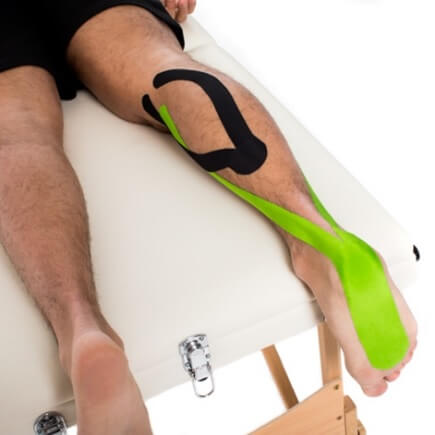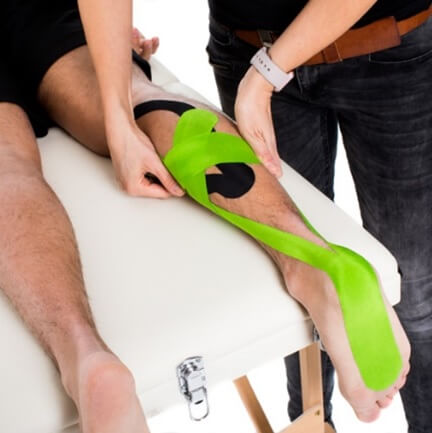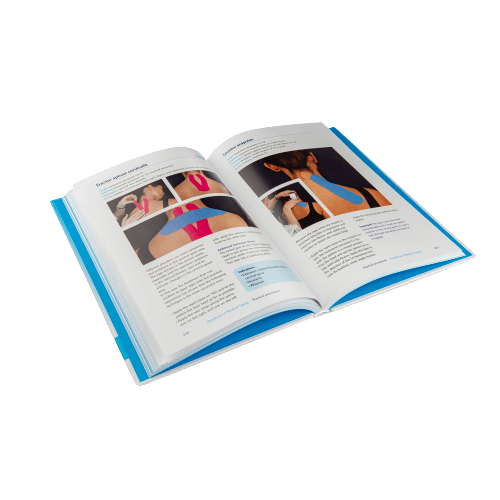What is a Calf Strain?
Calf Strain is one of the most common sports injuries. Calf Strain is a muscle injury which most commonly occurs in the calf muscle, but it can also occur in the back, hamstring, neck and arms. Calf Strain can involve a small tear in the muscle, or even a complete rupture. A characteristic of this injury is that most people hear a crackling sound when it is sustained. At the same time, you often feel a sharp/burning pain in the calf.
What causes Calf Strain?
Mostly, the muscle tear is caused by an explosive movement during sports. However, Calf Strain can also occur during everyday efforts such as cycling or walking. You increase the risk of a Calf Strain by doing sport without warming up your muscles. During a Calf Strain, you feel a sharp, intense pain and are often unable to stand on your leg. A swelling and a haematoma develop at the rupture. A dimple can often be felt at the site of the tear. Calf Strain is one of the top 10 sports injuries and recovery from a muscle tear can take as long as 3 to 6 weeks!
Faster recovery with CureTape®
In the recovery process of a Calf Strain, the physiotherapist can do a lot for his client by applying kinesiology taping treatment with CureTape®. The physiotherapist can apply the treatment with CureTape® fairly quickly after a Calf Strain. This reduces the swelling and also makes it possible to move pain-free, which will speed up the recovery process. For a good result it is very important to have the kinesiology taping treatment done by an experienced therapist. While applying the tape, you should immediately experience the difference. When the pain does not get much less, it is very well possible that the CureTape® has to be moved a little bit. It is very important to listen carefully and to test during the treatment. The physiotherapist knows from experience what results can be achieved with kinesiology taping.
Get started with these items to tape calf strain
-
CureTape® Classic Kinesiology Tape
Bestseller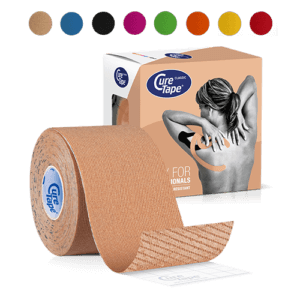 $19.95
In stockSelect options This product has multiple variants. The options may be chosen on the product page
$19.95
In stockSelect options This product has multiple variants. The options may be chosen on the product page -
CureTape® Sports Extra Sticky Kinesiology Tape
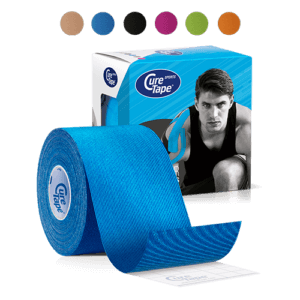 $21.95
In stockSelect options This product has multiple variants. The options may be chosen on the product page
$21.95
In stockSelect options This product has multiple variants. The options may be chosen on the product page -
CureTape® Art Printed Kinesiology Tape
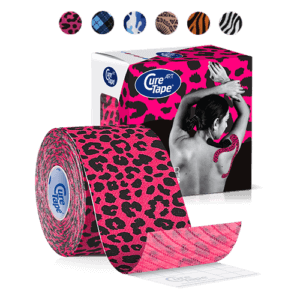 $21.95
In stockSelect options This product has multiple variants. The options may be chosen on the product page
$21.95
In stockSelect options This product has multiple variants. The options may be chosen on the product page -
Standard scissors
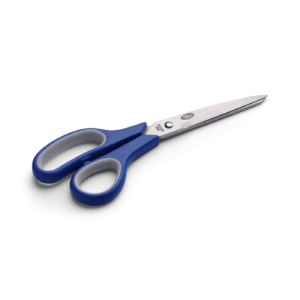 $14.95
In stockAdd to cart
$14.95
In stockAdd to cart
How do you tape a Calf Strain?
Instructions for professionals
- First, the rupture is treated with a ligament technique (maximum from the centre) . This can be done with a star tape (4 i-tapes of 2.5 cm width).
- The first tape is placed across the rupture with maximum stretching from the centre.
- The star is then finished off with the other 3 strips (photo 1). Alternatively, one strip across the rupture.
- If it concerns a rupture of the Achilles tendon or the muscle-tendon transition, we recommend applying a supporting ligament tape over the Achilles tendon (photo 2).
- Next, apply a relaxing tape, from the calcaneus under the foot to just past the knee, along the M. Tricepts Sureae with emphasis on the M. Soleus (photo 3).
Instructions for self taping (non-professionals)
- First, the tear is treated using a special taping method called a ligament technique where minimal stretch is used. This involves using star-shaped tape, which consists of four narrow strips of tape (each 2.5 cm wide)
- Apply the first strip tightly across the tear, stretching it from the center.
- Add the remaining three strips to complete the star pattern (photo 1), or use just one strip across the tear.
- If the tear affects the Achilles tendon, apply supportive tape over it (photo 2)
- Next, apply relaxation tape from the heel bone to just above the knee, focusing on the calf muscles, especially the soleus (photo 3).
How to tape a Calf Strain in 3 steps
Step 1:


Christina’s advice when taping your calves
When taping your leg, it’s crucial to choose a tape that provides strong adhesion and support. That’s why I recommend CureTape kinesiology tape. For regular use, CureTape Classic or Art is ideal. However, if you are being very active and move around a lot, opt for the extra sticky CureTape Sports variant!
Learn how to tape
- The Ultimate Taping Guide: Focuses on self-taping for the 30 most common injuries where taping provides support.
- Kinesiology Taping Method Manual: Designed for (para medical) professionals, covering basic taping techniques and various pathologies.
- Decompressive Taping Techniques Manual: Specifically focuses on lymphatic taping methods for decompression.
What are you waiting for? Order a copy today!
THYSOL is the manufacturer of the kinesiology tape brand CureTape. As CureTape, we have been training and supplying professionals for 25 years. And consumers now know how to find us too! By manufacturing all our tapes in our own factory, we can guarantee the best quality!
Please note that the indicated tape applications and information on our website about the possibilities with kinesiology tape have not yet been scientifically proven. The statements and examples mentioned are based on long-term experiences of patients and trained therapists.Contraindications not to tape: pregnancy, open wounds, broken bones, unexplained complaints, allergies and skin diseases, use of medication such as blood thinners, thrombosis and fever. Always apply tape in consultation with a specialist.

